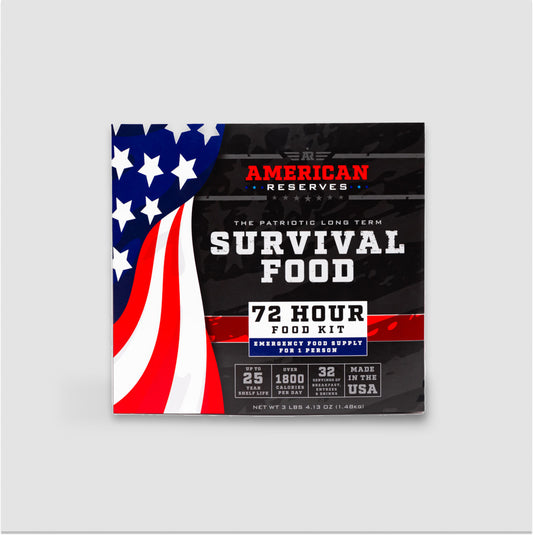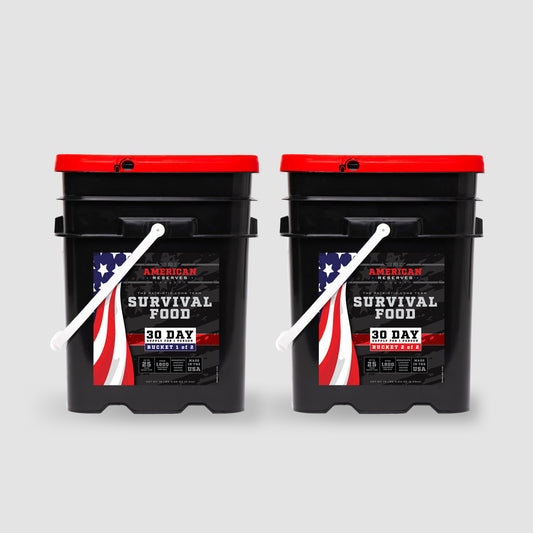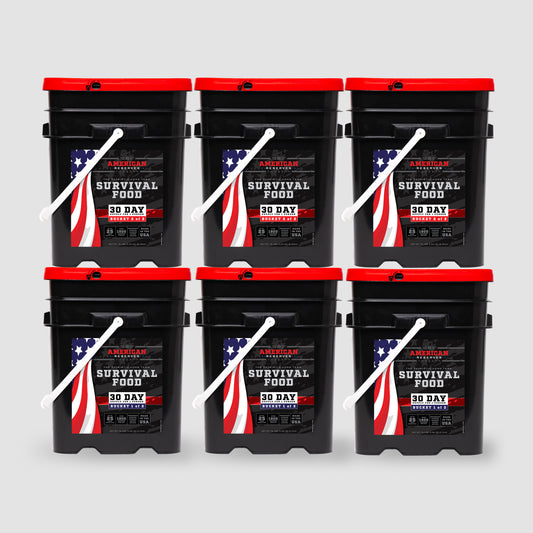
MRE vs Freeze Dried: Which Is Better For Survival?
When it comes to preparing for the unexpected, having reliable and nutritious food options is paramount. For preppers, outdoor adventurers, and emergency planners alike, the debate between MREs and freeze-dried foods is a significant one. This comprehensive comparison will explore the advantages and disadvantages of each, providing you with the insights needed to choose the best option for your survival strategy.
What Is MRE?
MRE, or Meals Ready-to-Eat, are self-contained, individual field rations developed by the military to provide complete, nutritious meals that require no refrigeration and minimal preparation. Each MRE pack typically includes an entrée, side dish, dessert, crackers or bread, spread, beverage mix, and a flameless ration heater to warm the food. Designed for durability and convenience, MREs have a long shelf life and are ideal for survival situations, outdoor adventures, and emergency preparedness, offering a balanced diet with essential vitamins and minerals to sustain energy and health in challenging conditions.
What Is Freeze Dried?
Freeze-dried food undergoes a preservation process where moisture is removed through sublimation, transforming ice directly into vapor without passing through a liquid phase, which is crucial for maintaining hydration in survival situations. This method retains the food's original flavor, texture, and nutritional value while significantly extending its shelf life. Lightweight and compact, freeze-dried meals are ideal for long-term storage, outdoor activities, and emergency kits. They require only the addition of water to rehydrate, making them convenient and easy to prepare. With a wide variety of options available, freeze-dried foods offer versatility and reliability for those focused on survival and preparedness.
MRE vs Freeze Dried: Which Is Better For Survival?
Nutritional Value
When it comes to nutritional value, both MREs and freeze-dried foods offer substantial benefits, but they cater to different needs. MREs are designed to provide a balanced diet with a mix of proteins, carbohydrates, fats, and essential vitamins and minerals. Each MRE pack is a complete meal, ensuring that you receive the necessary nutrients to maintain energy and health in survival situations. On the other hand, freeze-dried foods retain most of their original nutritional content due to the gentle preservation process. They often come in a variety of meal options, allowing for more dietary flexibility and customization. However, the nutritional balance may vary depending on the specific product chosen.
Shelf Life
Shelf life is a critical factor in survival food storage, and both MREs and freeze-dried foods excel in this area. MREs typically have a shelf life of 3 to 5 years, depending on storage conditions. They are designed to withstand extreme temperatures and rough handling, making them highly durable. Freeze-dried foods, however, can last significantly longer, often up to 25 years or more when stored properly. This extended shelf life makes freeze-dried foods an excellent choice for long-term emergency preparedness.
Portability and Weight
Portability and weight are essential considerations for outdoor enthusiasts and emergency planners. MREs are relatively heavy and bulky due to their packaging and included accessories, such as flameless ration heaters. While this makes them convenient for immediate consumption, it can be a drawback for those needing to carry large quantities over long distances. Freeze-dried foods, in contrast, are incredibly lightweight and compact, as the removal of moisture significantly reduces their weight. This makes them ideal for backpacking, hiking, and situations where space and weight are at a premium.
Preparation and Convenience
In terms of preparation and convenience, MREs are designed for ease of use. They require no additional water or cooking, as they come with a flameless ration heater that allows you to warm the meal quickly. This makes MREs highly convenient in situations where water is scarce or cooking facilities are unavailable. Freeze-dried foods, however, require the addition of hot or cold water to rehydrate, which can be a limitation if water is not readily accessible. Despite this, the preparation process is straightforward and quick, making freeze-dried meals a convenient option when water is available.
Taste and Variety
Taste and variety are important factors that can influence your choice between MREs and freeze-dried foods. MREs offer a range of meal options, but their taste can be hit or miss, with some individuals finding them less palatable over time. Freeze-dried foods generally retain their original flavors better, resulting in a more enjoyable eating experience. Additionally, the variety of freeze-dried meals available on the market is extensive, catering to different dietary preferences and restrictions, which can be a significant advantage for maintaining morale during extended survival situations.
Cost
Cost is another crucial consideration when comparing MREs and freeze-dried foods. MREs tend to be more expensive per meal due to their comprehensive packaging and included accessories. However, they offer the convenience of a ready-to-eat meal without the need for additional resources. Freeze-dried foods, while often cheaper per meal, require an initial investment in water and potentially cooking equipment. Over the long term, the cost-effectiveness of freeze-dried foods can be more favorable, especially when considering their extended shelf life.
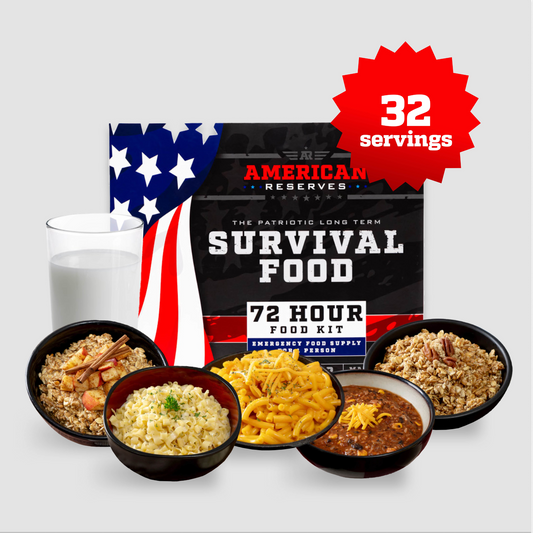
72 Hour Emergency Food and Drink Supply - 32 Servings
$36.99
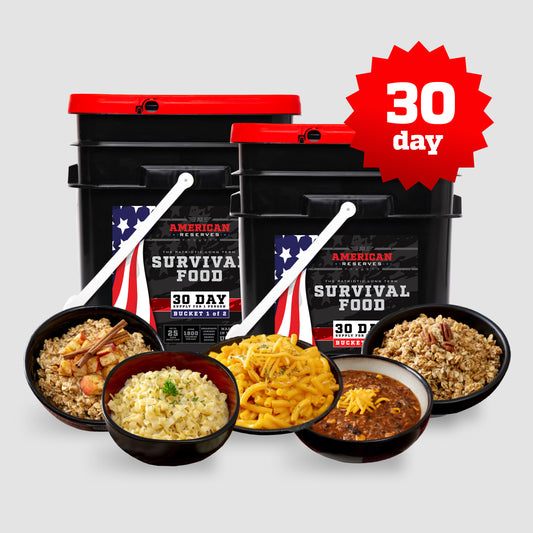
30 Day Emergency Food Supply
$319.99
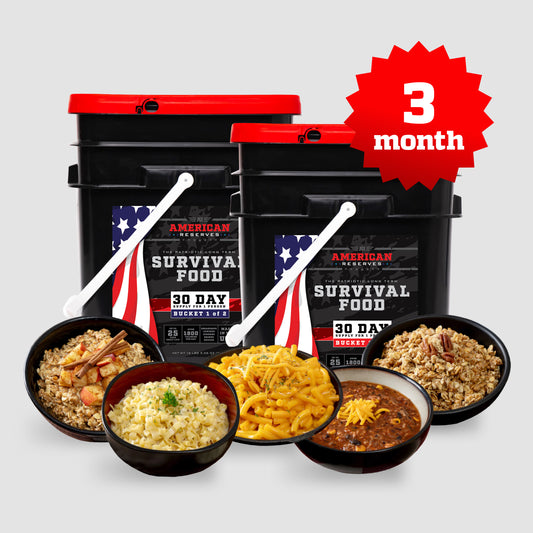
3 Month Emergency Food Supply
$835.00
Are MRE Freeze-Dried?
No, MREs (Meals Ready-to-Eat) are not freeze-dried. Instead, they are fully cooked meals that are vacuum-sealed in durable packaging to ensure a long, shelf-stable life and easy portability. Unlike freeze-dried foods, which have their moisture removed through sublimation to prevent dehydration, MREs retain their moisture content and are designed to be consumed directly from the package, often with the aid of a flameless ration heater to warm the meal. This makes MREs convenient for situations where water might be scarce or where immediate, ready-to-eat meals are necessary.
What Is The Disadvantage Of MRE?
- Weight and Bulkiness: MREs are relatively heavy and bulky compared to freeze-dried foods, making them less ideal for situations where carrying capacity and weight are critical, such as long-distance hiking or backpacking.
- Limited Shelf Life: While MREs have a decent shelf life of 3 to 5 years, they do not last as long as freeze-dried foods, which can remain viable for up to 25 years or more when stored properly.
- Taste and Variety: The taste of MREs can be hit or miss, with some individuals finding them less palatable over time. Additionally, the variety of meal options is limited compared to the extensive range of freeze-dried foods available.
- Cost: MREs tend to be more expensive per meal due to their comprehensive packaging and included accessories, which can add up quickly, especially when stocking up for long-term preparedness.
- Nutritional Content: While MREs are designed to provide a balanced diet, they can be high in sodium and preservatives, which may not be ideal for long-term consumption or for individuals with specific dietary restrictions.
Does Freeze Dried Offer More Food Varieties Than MREs?
Yes, freeze-dried foods offer a significantly wider variety of meal options compared to MREs. The freeze-drying process preserves the original flavors, textures, and nutritional content of a diverse range of foods, including vegetables, allowing manufacturers to create an extensive selection of meals, including vegetarian, vegan, gluten-free, and specialty diet options. This variety caters to different dietary preferences and restrictions, making it easier for individuals to maintain a balanced and enjoyable diet during survival situations or outdoor adventures. In contrast, MREs, while providing complete meals, have a more limited selection and can become monotonous over time.
Which Has More Calories MREs or Freeze Dried?
MREs generally have more calories per meal compared to freeze-dried foods. Each MRE is designed to provide a complete, high-calorie meal, typically ranging from 1,200 to 1,500 calories, to meet the energy demands of military personnel and individuals in survival situations. This high caloric content ensures that users receive sufficient energy to sustain physical activity and maintain health in challenging conditions. In contrast, freeze-dried meals vary widely in caloric content depending on the specific product and serving size, but they often contain fewer calories per serving. While freeze-dried foods can be combined to meet daily caloric needs, MREs offer a more straightforward solution for high-calorie intake in a single package.
How Do I Know Which Is Better For Me MREs or Freeze Dried?
Assess Your Needs
- Immediate Consumption:
- MREs: Opt for MREs if you need ready-to-eat meals that require no additional preparation or resources.
- Freeze-Dried Foods: Choose freeze-dried foods if you have access to water and can take the time to rehydrate meals.
- Long-Term Storage:
- MREs: Suitable for short to medium-term storage (3 to 5 years).
- Freeze-Dried Foods: Ideal for long-term storage (up to 25 years or more).
Consider Your Environment
- Urban Settings:
- MREs: Practical for limited space and immediate use.
- Freeze-Dried Foods: Effective for varied dietary needs and long-term storage in compact spaces.
- Outdoor Adventures:
- MREs: Convenient for short trips where weight is less of a concern.
- Freeze-Dried Foods: Preferable for longer trips due to their lightweight and compact nature.
Evaluate Your Dietary Preferences
- Variety and Taste:
- MREs: Limited variety and taste can be hit or miss.
- Freeze-Dried Foods: Offers a wider range of meal options and generally better taste.
- Nutritional Requirements:
- MREs: Provides a balanced diet with essential nutrients but can be high in sodium and preservatives.
- Freeze-Dried Foods: Retains most original nutritional content and offers options for specific dietary restrictions.
Budget Considerations
- Cost Per Meal:
- MREs: Generally more expensive per meal due to comprehensive packaging.
- Freeze-Dried Foods: Often cheaper per meal, especially when considering long-term storage.
Specific Scenarios
- Emergency Preparedness:
- MREs: Excellent for immediate, ready-to-eat meals in emergency kits.
- Freeze-Dried Foods: Great for comprehensive emergency food kits with a reliable water source.
- Military and Tactical Use:
- MREs: Designed for military use, offering durability and complete meals.
- Freeze-Dried Foods: Beneficial for extended missions with infrequent resupply.
Conclusion
In conclusion, the choice between MREs and freeze-dried foods ultimately depends on your specific survival needs, environment, and personal preferences. MREs offer the convenience of ready-to-eat meals with high caloric content, making them ideal for immediate consumption during emergencies and short-term scenarios. On the other hand, freeze-dried foods provide a longer shelf life, lightweight portability, and a wider variety of meal options, making them suitable for long-term storage and extended outdoor adventures. By carefully assessing your requirements and considering factors such as preparation, nutritional value, and cost, you can make an informed decision that ensures you are well-prepared for any survival situation.
Final Thoughts
With exceptional survival expertise and the finest locally sourced ingredients from across the USA, American Reserves provides emergency food supply kits that deliver essential nutrition when you need it most. These kits are your essential solution for any emergency. Rely on the steadfast quality of American Reserves to prepare with confidence for any scenario!
Sources
